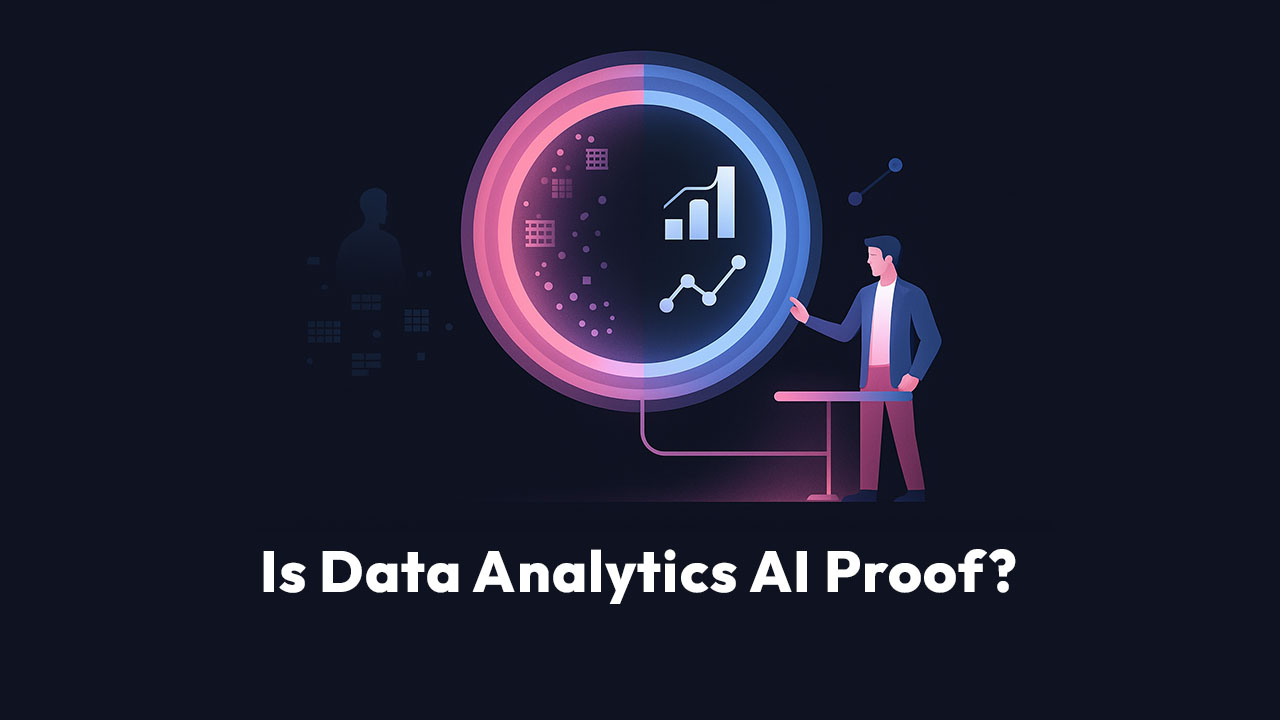How to use EDA in Your Business
Exploratory data analysis, or EDA, is the process of examining your data to uncover patterns, relationships, and anomalies before making any assumptions. It’s the “investigation” stage of analytics—where data stops being abstract numbers and starts telling a story.
In plain terms, EDA helps you understand what’s really happening in your business, before you commit to models, forecasts, or big strategic moves. It answers questions like:
- Why are sales dropping in one region but not another?
- Are there hidden patterns in customer churn?
- What factors truly drive profit margins?
If you’re a business leader, you’ve probably been in a meeting where data was presented as if it were absolute truth. But what if the story behind the data was misunderstood—or worse, never explored? That’s where exploratory data analysis changes everything.
How Does Exploratory Data Analysis Work?
Exploratory data analysis works by combining statistics, visualization, and intuition to find meaning in data before formal modeling begins. Think of it as a diagnostic process—like a doctor examining a patient before making a prescription.
It typically involves:
- Collecting and cleaning data – Removing errors, duplicates, or missing values.
- Visualizing trends – Using charts, graphs, and plots to reveal patterns.
- Testing relationships – Exploring correlations between variables (e.g., customer behavior vs. marketing spend).
- Generating insights – Forming hypotheses about why things are happening.
It’s less about confirming what you already believe and more about discovering what you didn’t know.
What Makes EDA Different from Traditional Data Analysis?
Traditional data analysis often starts with a hypothesis—a guess you want to test. Exploratory data analysis starts with curiosity.
Here’s the difference:
- Traditional analysis: “I think sales dropped because of pricing. Let’s test that.”
- Exploratory analysis: “Sales dropped—let’s see what the data says before assuming why.”
EDA doesn’t force the data to fit a narrative. It lets the narrative emerge from the data.
Why Should Business Leaders Care About Exploratory Data Analysis?
Because decisions made on incomplete or misunderstood data can be expensive.
In today’s data-saturated environment, companies that interpret their data accurately—and early—gain a measurable edge. EDA empowers business and operations leaders to:
- Detect problems before they escalate
Spot anomalies in production, logistics, or sales that might otherwise go unnoticed. - Find hidden opportunities
Discover underserved customer segments, emerging product trends, or seasonal patterns. - Build a data-driven culture
Encourage your team to question assumptions rather than accept surface-level metrics. - Reduce risk
EDA acts as a safeguard before large investments—helping you validate assumptions with real evidence.
What Are the Core Techniques of Exploratory Data Analysis?
EDA isn’t one single technique—it’s a toolkit. Each method reveals a different layer of insight.
1. Univariate Analysis
Focuses on one variable at a time. It answers questions like:
- What does my customer age distribution look like?
- Are there extreme values (outliers)?
Common tools: histograms, box plots, and descriptive statistics (mean, median, standard deviation).
2. Bivariate Analysis
Explores relationships between two variables. For example:
- Does ad spend correlate with customer acquisition?
- Do higher prices always mean fewer sales?
Tools: scatter plots, correlation matrices, and contingency tables.
3. Multivariate Analysis
Looks at three or more variables simultaneously. It’s powerful for complex decisions, like identifying which combination of factors leads to customer churn or product returns.
Techniques include Principal Component Analysis (PCA) and clustering algorithms (like K-means) to uncover groups or patterns.
4. Specialized Analyses
- Time Series Analysis: Examines trends and seasonality over time (ideal for forecasting).
- Spatial Analysis: Visualizes geographic data to identify regional patterns.
- Text Analysis: Extracts insights from customer reviews or social media conversations using NLP (Natural Language Processing).
How Can Exploratory Data Analysis Improve Business Operations?
Let’s look at a few practical applications across departments:
1. Customer Segmentation and Behavior Analysis
Imagine you run an eCommerce company with thousands of customers. You suspect not all buyers behave the same way—but you’re unsure how to categorize them.
EDA allows you to visualize purchasing patterns, demographics, and engagement data. You might discover:
- Younger customers buy smaller items more frequently.
- Older customers purchase less often but with higher basket values.
- Customers in the Midwest respond more to email promotions, while coastal customers prefer SMS.
That’s not just trivia—it’s strategy. With these insights, you can personalize campaigns, adjust pricing, and allocate marketing budgets more intelligently.
2. Churn Prediction and Retention
Subscription-based businesses live and die by retention. EDA helps you identify early warning signs of customer churn.
By analyzing usage frequency, feedback sentiment, and support interactions, you can spot at-risk customers before they cancel.
For example:
- Customers who don’t log in for seven days are twice as likely to cancel.
- Negative reviews spike two weeks before churn.
Armed with this insight, you can proactively offer incentives, support calls, or new features that re-engage those users.
3. Supply Chain Optimization
Operational leaders can use EDA to streamline logistics. By analyzing delivery times, supplier performance, and regional demand fluctuations, EDA highlights bottlenecks.
One manufacturer discovered through EDA that a single supplier’s late shipments caused cascading delays. They restructured contracts and diversified suppliers—reducing production downtime by 18%.
4. Financial Performance and Forecasting
In finance, EDA supports budgeting, forecasting, and investment planning. By visualizing spending categories, revenue sources, and seasonal fluctuations, companies can make smarter financial projections.
For instance, EDA might reveal that Q4 marketing campaigns correlate with higher revenue only in certain product lines—helping leaders focus spending where it actually matters.
What Tools Can Businesses Use for EDA?
You don’t need a PhD in statistics to run exploratory data analysis. Today’s tools are intuitive and powerful.
Here’s a quick comparison:
If your team uses spreadsheets daily, start small—then graduate to BI platforms or automated tools that deliver deeper insights without the manual grind.
Common Mistakes to Avoid in EDA
Even the best tools can’t fix a flawed approach. Watch out for these pitfalls:
- Overfitting insights – Seeing patterns where none exist.
- Ignoring data quality issues – Small errors snowball into big misinterpretations.
- Confusing correlation with causation – Just because two variables move together doesn’t mean one causes the other.
- Overcomplicating visuals – Simplicity wins comprehension.
- Forgetting your audience – Tailor your insights to decision-makers, not data scientists.
What Are the Benefits of EDA for Business Leaders?
When done right, exploratory data analysis transforms from a technical exercise into a strategic weapon.
Here’s what it delivers:
- Clarity: No more guessing—just clear visibility into what drives performance.
- Confidence: Decisions backed by evidence, not gut feelings.
- Speed: Quicker pivots based on real-time insights.
- Collaboration: Shared understanding between data teams and leadership.
In short: EDA helps you move from reactive management to proactive strategy.
FAQ
What is exploratory data analysis in simple terms?
EDA is the process of examining data visually and statistically to discover insights, detect anomalies, and understand relationships before formal analysis or modeling.
How does EDA improve business decision-making?
It reveals the “why” behind your metrics—why sales spike, why customers churn, why costs rise—helping you make data-backed, confident decisions.
Do I need a data science team to do EDA?
Not necessarily. With tools like Power BI, Tableau, or automated platforms such as Quid or ydata-profiling, even non-technical teams can perform basic exploratory analysis.
What industries benefit most from EDA?
Every industry—from retail and manufacturing to healthcare and finance—uses EDA to improve efficiency, understand customers, and forecast trends.
How often should a company perform EDA?
Treat it as an ongoing process. Run EDA whenever new data becomes available or when key business metrics shift unexpectedly.
How to Turn EDA Insights into Action
Exploratory data analysis doesn’t end with discovery—it begins there. The value comes when you act on what you’ve learned.
Here’s how to bridge insight to execution:
- Translate findings into decisions. Don’t just share data—assign ownership.
- Integrate insights into planning cycles. Use EDA findings in quarterly reviews or strategy sessions.
- Automate recurring analyses. Build dashboards or alerts for continuous monitoring.
- Track outcomes. Did the changes inspired by EDA lead to measurable improvement?
Conclusion
The question isn’t whether you should use exploratory data analysis—it’s how quickly you can start.
In a world drowning in data, EDA is your compass. It turns uncertainty into clarity, assumptions into evidence, and complexity into confidence.
If your business isn’t already exploring its data deeply, you’re likely missing insights your competitors are already using. Start small. Ask better questions. Visualize more. The results might surprise you.








.png)